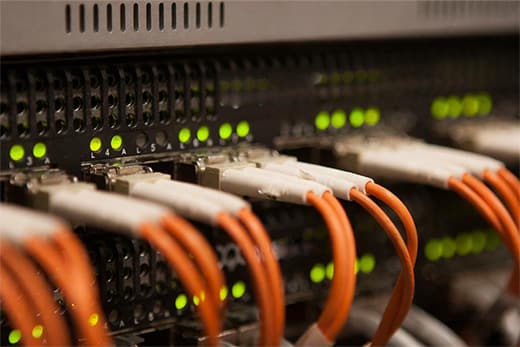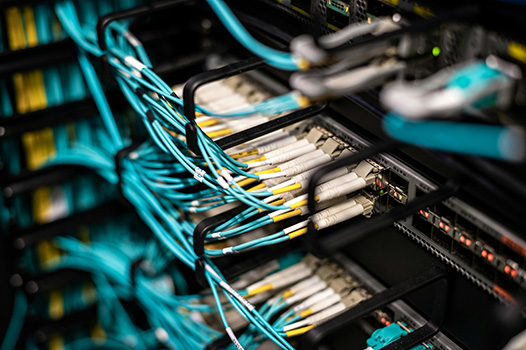Unmasking the hidden threat of EMI in smart manufacturing and how to build an indestructible industrial network foundation.
PLC communication loss, HMI screen freezes, rogue robot stoppages—do these “ghost in the machine” failures haunt your automation systems? If you’ve spent countless hours troubleshooting software and rebooting switches to no avail, the root cause might be lurking right under your feet, at the physical layer.
If you've spent any time on engineering forums like Reddit's r/PLC or PLCtalk, you'll find endless threads of engineers sharing frustrating stories about intermittent connectivity issues. Behind many of these issues lies a common, yet frequently overlooked, culprit.
Imagine trying to have a critical conversation on a walkie-talkie while someone next to you blasts a high-powered radio jammer. The static is overwhelming; key commands are lost. In your industrial environment, Electromagnetic Interference (EMI) is that invisible jammer.
This article will guide you in hunting down this saboteur and provide a definitive solution to make your smart factory network truly robust.
Chapter 1: Diagnosing the Root Cause: Welcome to the Center of the "Electromagnetic Storm"
Modern factories are electrically noisy environments. The very equipment that drives your efficiency—Variable Frequency Drives (VFDs), servo motors, welding robots, and switching power supplies—radiates intense electromagnetic energy. This EMI is a form of pollution for your network.
When this "electrical noise" corrupts the electrical signals traveling through traditional copper network cables (like your standard Ethernet cabling), the consequences are severe and costly:
- Data Corruption: Bit errors in data packets can cause cyclical redundancy check (CRC) failures and timeouts in real-time protocols like EtherNet/IP or PROFINET, leading to mis-executed commands.
- Communication Loss: Sensor readings can become erratic or disappear entirely, triggering false alarms and bringing I/O networks to a halt.
- Production Losses: The end result is a higher defect rate and unplanned downtime. According to a report by the leading industry publication IndustryWeek, unplanned downtime can cost automotive OEMs as much as $50 billion annually [1].
This isn't just a connectivity nuisance; it's a multi-million-dollar threat to your production efficiency and operational safety.
Chapter 2: The Common Prescription and Its Dangerous Side Effects: The Shielded Copper Trap
Faced with interference, the first instinct is often, "Let's use Shielded Twisted Pair (STP) cabling."
In theory, STP cables compliant with industrial standards like TIA-1005-A or ISO/IEC 11801 are designed for this purpose. However, their effectiveness is critically dependent on a perfect, equipotential grounding system. In a complex factory with multiple power sources and ground points, achieving this is notoriously difficult.
As many veteran engineers on industry forums will attest, a single flawed ground connection can create a ground loop. This turns your cable's shield from a protector into a massive antenna, actively collecting and channeling more noise directly into your signal path.
In the world of high-reliability industrial automation, a solution built on uncertainty is a liability waiting to happen.
Chapter 3: The Ultimate Cure: The Natural Immunity of Light
The most definitive and reliable way to defeat EMI is to use a communication medium that is, by the laws of physics, immune to it: Fiber Optics.
The principle is simple: EMI is an electromagnetic phenomenon. It cannot interfere with the pulses of light traveling through a glass fiber core. Your data travels as light, completely isolated from the electrical chaos of the factory floor. This is reliability at the level of a physical constant.
As the authoritative publication Control Engineering highlights, because fiber optic cables are non-conductive, they are completely immune to electromagnetic interference and even lightning strikes [2].

Beyond EMI immunity, fiber optics deliver other transformative advantages:
Greater Distance: Easily span kilometers without repeaters, connecting any two points in your facility.
Higher Bandwidth: Future-proof your network for high-definition machine vision, AI analytics, and digital twin applications.
Intrinsic Safety: With no electrical current, there's no risk of sparking, making it the superior choice for hazardous environments (e.g., chemical, oil & gas).
Chapter 4: The Expert's Formula: Why Your Factory Demands Industrial-Grade Optical Modules
So, fiber is the answer. Just grab any commercial-grade SFP module and you're done, right?
Consider this: would you install a delicate,ng-star-inserted">The same logic applies to your network components. The market clearly distinguishes between Commercial Grade (typically 0°C to 70°C) and Industrial Grade modules for a reason.
This is precisely whereAxonode's Industrial-Grade Optical Transceiversprovide their value. Our design philosophy is simple: Prepare for the worst environment to deliver the best performance.
- Wide Operating Temperature (-40°C to 85°C): Extend your network from the climate-controlled server room to the hottest, coldest, and most demanding corners of your plant. While a commercial module might fail under extreme temperatures, our industrial-grade modules are engineered to perform reliably.
- Industrial-Grade Rugged Design: The factory floor is an environment of constant vibration, potential shocks, and mechanical stress. Our modules feature a reinforced construction, ensuring that internal optical and electrical connections maintain absolute stability. This is a systematic hardening from the inside out, designed to provide a reliable network port that will not fail due to physical factors.
- Adaptability to Complex Environments: Dust, humidity, and temperature fluctuations are the norm in manufacturing. The "industrial" designation means our modules are built to harsher standards, from component selection to manufacturing processes. This ensures long-term, maintenance-free stability where commercial-grade products would drift or fail.
- Choosing Axonode means transforming your network's most vulnerable physical link into its most resilient one. It is a commitment to providing a trusted pathway for your critical data, empowering your production lines to run continuously and reliably.
Conclusion: Shifting from Firefighting to Fireproofing
The race to build the smartest factory is ultimately a race for reliability. Instead of reactively "firefighting" one ghost-like network failure after another, it's time to proactively "fireproof" your foundation.
As you invest in the next generation of AI and automation, do not overlook the physical layer that underpins it all. Don't let an invisible saboteur erode your progress and profits.
References / Sources:
[1] Hinckley, D. (2022, May 18). The Auto Industry's $50 Billion Challenge: Unplanned Downtime. IndustryWeek. Retrieved from https://www.industryweek.com/the-changing-factory-floor/article/21242084/the-auto-industrys-50-billion-challenge-unplanned-downtime
[2] Control Engineering Staff. (2008, January 29). Fiber optic vs. copper: 5 reasons fiber wins. Control Engineering. Retrieved from https://www.controleng.com/articles/fiber-optic-vs-copper-5-reasons-fiber-wins/
Axonode

 A Deep Dive into High-Speed Data Center Interconnects: A Field Guide for Engineers on DACs, AOCs & Optical Transceivers
A Deep Dive into High-Speed Data Center Interconnects: A Field Guide for Engineers on DACs, AOCs & Optical Transceivers
 The Ultimate "In-Rack" Showdown: DAC vs. Transceivers vs. AOCs
The Ultimate "In-Rack" Showdown: DAC vs. Transceivers vs. AOCs
 Fiber Exhaustion? The WISP & MSP's Field Guide to Passive CWDM Expansion
Fiber Exhaustion? The WISP & MSP's Field Guide to Passive CWDM Expansion

